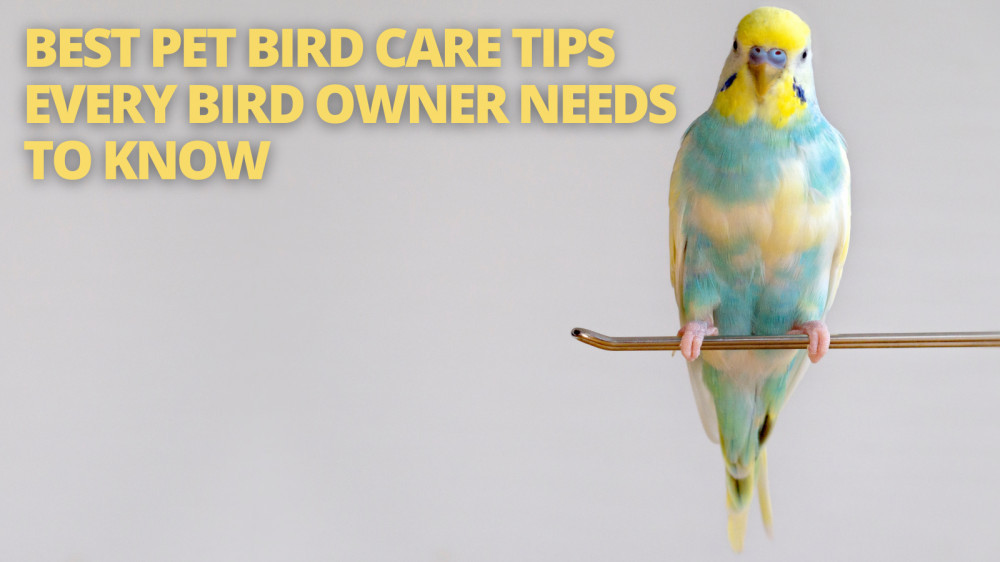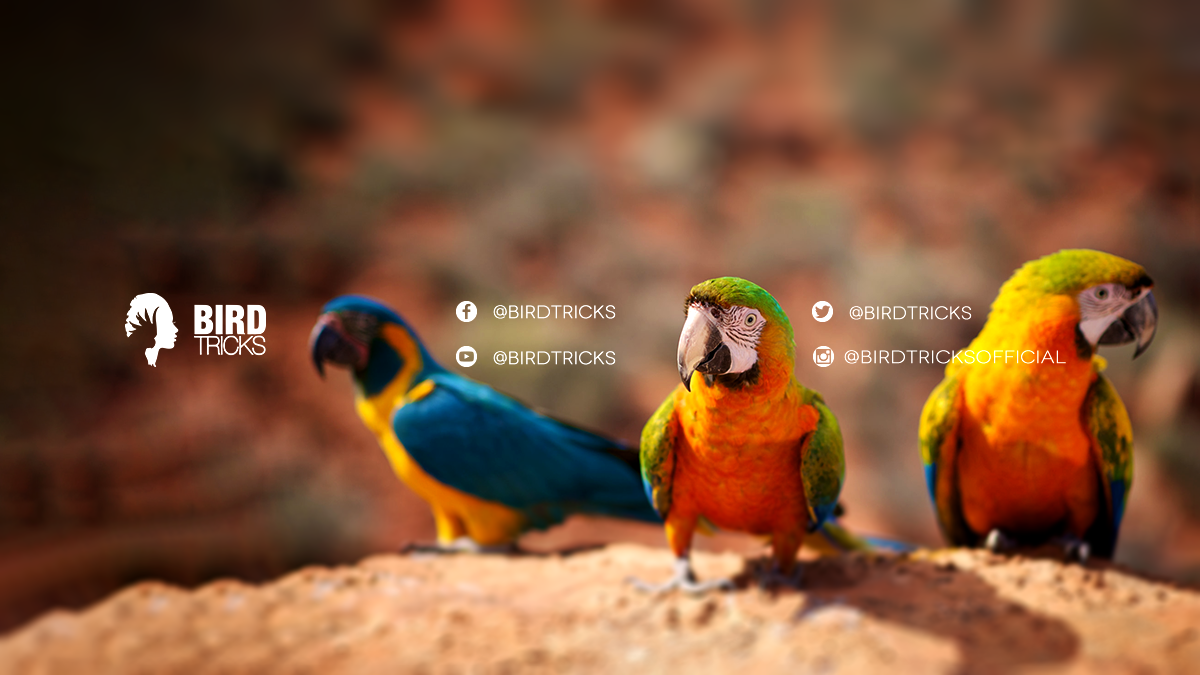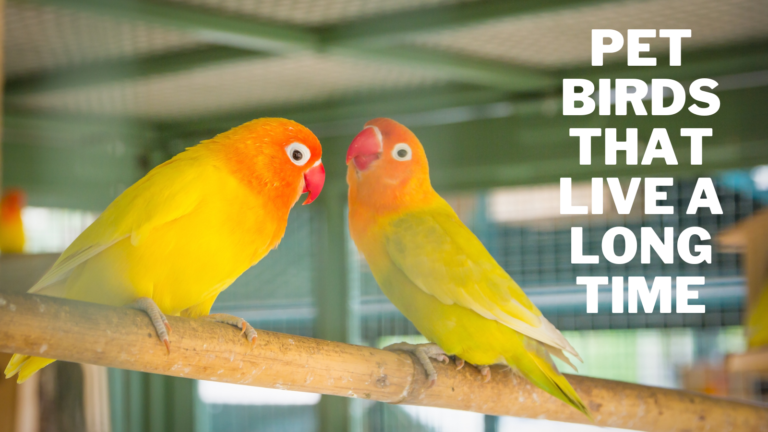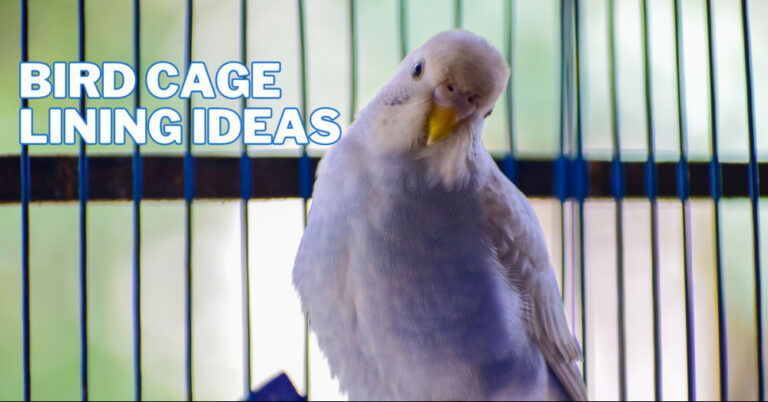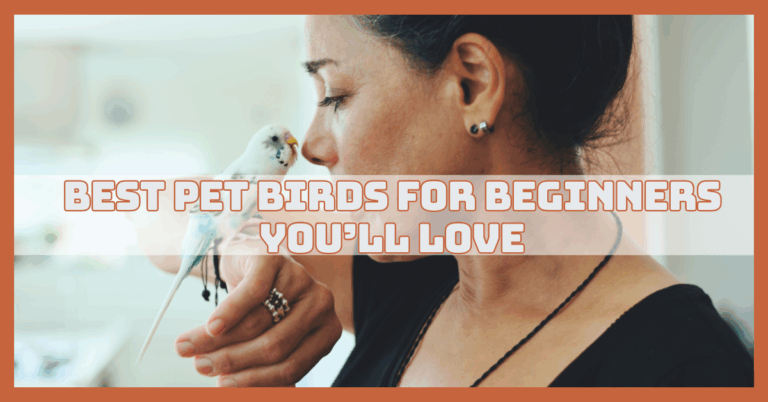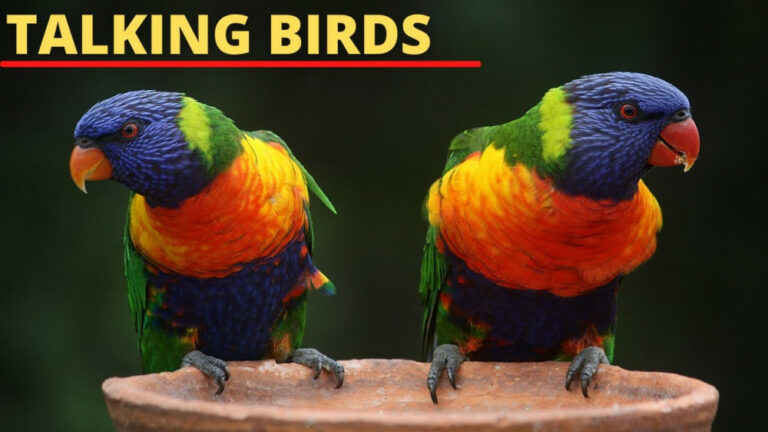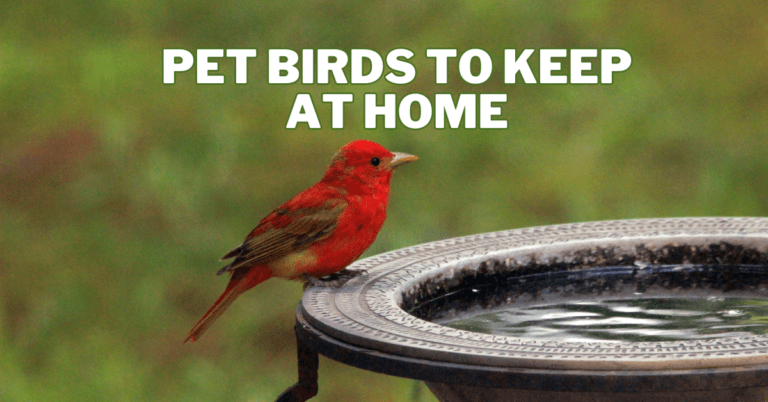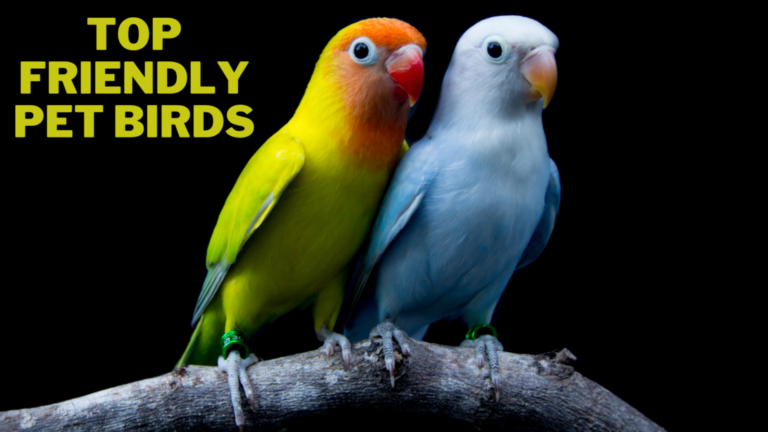Best Pet Bird Care Tips Every Bird Owner Needs To Know
Best Pet Bird Care Tips Every Bird Owner Needs To Know
Birds like interaction, caring, and routine engagement because of their intrinsic social nature. Many different bird species make fun and enjoyable pets.
Offering a cozy atmosphere, providing nourishing food, and monitoring the bird's health are all part of the care obligations for bird ownership. You must also provide your pet bird with lots of enrichment and interaction if you want it to be happy and alert.
Anyone who has kept birds as pets would attest to their beautiful nature. With individual personalities and a lifespan of anything from 10 to 80 years, take good care of yourself, and you might make a lifelong buddy!
We have some general advice you may use if you're considering getting one as a pet but want to learn a little more about caring for a bird before you commit.
Varieties Of Pet Birds
Large varieties of parrots are particularly common as household pets; it's estimated that 5 million birds are kept solely as pets in the United States.
Research is essential before picking a pet bird because some species need much care and special attention, and some are even likely to outlast their owners!
Smaller bird species, such as budgies, doves, and canaries, are excellent choices for novices because they are simple to care for and don't need a lot of interaction with humans.
These birds normally don't live as long as Macaws and other giant parrots, some of whom can live for over 60 years, but they are equally simple to feed and keep.
Birds are extremely intelligent beings with basic physical and mental demands that must be satisfied. Particularly with large parrots, one should not assume this task lightly. Here are 12 of the best breeds of birds for pets if you have the time and energy and prepare to bring one home.
1. African Grey Parrot
The African Grey is one of the world's smartest parrots and is known as “The Einsteins of the Bird World” for its extraordinary capacity to learn and mimic speech.
The Congo, which has a larger body and a black beak, and the Timneh, which has a smaller body, darker grey feathers, and maroon tail feathers, are two separate subspecies of African Greys.
These birds are among the nicest pets you can obtain, even though they require a decent amount of maintenance and can live for more than 50 years. They also form close bonds with their owners and become loving companions.
2. Amazon Parrots
Due to their playful and outgoing personalities, amazon parrots are among the most popular medium-sized best pet birds kept as pets. These talkative and humorous birds are renowned for their talking and singing and like being the focus of attention.
Although these birds adapt well to confinement, they need a lot of care and mental stimulation since they are prone to behavioural issues without it. Amazon parrots typically live for 40 to 50 years, sometimes even 80 or more.
3. Budgerigar (Budgies)
Additionally referred to as parakeets or just “budgies,” Budgerigars are small, intelligent birds that require less space and maintenance than larger parrots, making them a popular choice for new bird enthusiasts.
They can communicate on par with or even better than larger parrot species, and some have even acquired sophisticated vocabularies.
They are among the best pet birds available since they have a wide range of stunning colours and survive for 12 to 14 years on average.
4. Canary
Over 200 distinct subspecies of canaries, each with a distinctive personality and look, have been created through the hundreds of years that bird enthusiasts have kept and bred canaries.
They are well recognized for their role as the cartoon character “Tweety Bird” and their detection of poisonous gases in coal mines in the late 1800s. Since they are simple to care for, friendly, and often live for 5 to 15 years with proper care, they are excellent for beginners.
5. Cockatiel
The medium-sized cockatiel, a member of the cockatoo family, is frequently characterized by its owners as funny, gregarious, and cuddly. For instance, these birds like to nestle under their owner's shoulder. They are more well-known for whistling and singing than talking and are the only little parrots with a spectacular head crest. They have a wide variety of lovely hues and can live for 15 to 20 years.
6. Cockatoo
Cockatoos are wonderful pet birds renowned for having friendly, humorous, and mischievous personalities. These demanding birds are often called “Velcro birds” since they adore being close to their humans.
Around 21 different bird species make up the cockatoo species. They are known for their pronounced crests and curved beak and are occasionally raucous.
The fact that some variants of these parrots can live for up to 60 years makes them fantastic companions, but they are also one of the more difficult bird species to care for.
7. Conure
Conures are endearing, playful, and well-liked pet birds. Similar to the larger Macaw, they are small to medium-sized parrots with various vibrant colours. They are friendly birds who adore being around their owners and are renowned for being kind and patient with young ones.
They are also famous for being amiable and attached to the entire family, unlike many parrots who grow loyal to just one owner. Conures are one of the most diverse parrot species, with approximately 100 distinct subspecies. They live for 20 to 30 years.
8. Doves
Doves make excellent companion birds when grown and cared for properly, which makes them an unexpected inclusion in this list. They are more peaceful than parrots, friendly and easy to care for. Doves will happily perch on your shoulder like parrots do, making them a great choice of bird for novices for these reasons.
They are incredibly friendly birds that enjoy being petted and cuddled when raised properly. Ringneck doves, which have an average lifespan of 12 to 15 years, are the most common types of pet doves.
Pet Bird Care Tips
Although birds may seem extremely different from more conventional pets like dogs and cats, the same fundamental care guidelines apply.
The key components are affection, focus, a healthy diet, and skilled medical care. It is true, however, that caring for a pet bird differs significantly from caring for other types of animals.
You can give your pet bird greater care if you educate yourself on the subject.
Birds are very different from dogs and cats when maintained as pets. Although they are beautiful, taking care of them can be challenging.
Cleaning their cage or residence periodically is vital to stop spreading illnesses that could harm their health and feathers.
So, if you need advice on how to care for your pet bird, pay attention to these suggestions.
1. Housing
Purchase a big cage for the bird. Because large cages are best for your pet birds, get the largest one that matches your housing space. Generally, the cage should be at least twice as broad as the bird's wingspan.
The capacity to fly short distances inside their cage may be necessary for some birds to maintain a comfortable living environment. Other generally accepted prerequisites include:
The bird's talons could become stuck on or in the cage bars if the wires or lengths are too small for the cage bars. The bars shouldn't be so big that the bird's head or body can become stuck.
The cage should have more room; the better. Larger bird cages can be more expensive and more difficult to keep clean, but they are essential if you don't have time to take the bird outside for exercise or are rarely home.
Small cages may result in behavioural issues. Make sure the space is more than enough if housing more than one bird. Never maintain more than one bird in a small cage.
Each bird needs more room the bigger the cage is because they need to be able to fly, forage, and be kept apart from one another. Aviaries, big cages similar to small sheds, are better suited for simultaneously housing multiple birds.
2. Feeding
Feed your bird a variety of foods every day. For most bird breeds, a healthy diet consists of 75% pellets and 25% table food from humans.
Because each species has various dietary requirements, it is best to consult an avian veterinarian to find out what kind of food your breed of birds needs. You'll start to see trends in your bird's preferred sorts of food over time.
Make sure you have the right food for the bird's species. Finding the right food for your bird is important since some birds are picky while others have extremely specific nutritional needs.
Ask the breeder or the shop, or post a question on a dedicated forum of people who look after this kind of bird if you are unsure about the best food options.
Providing your bird with enough food can be done using bird pellets, crumbles, or nuggets. You can frequently mix nutritious seeds, veggies, fruits, and grains for your pet bird to consume a nutritionally balanced diet. These prefer a seed mixture, enabling birds to select pleasant sources while discarding the nutritious ones.
Feed fresh seed every day, and always remove the eaten shells the following day to maintain the seed clean and fresh.
3. Give Them Fresh Water
Your pet bird needs a continuous supply of fresh water. Use a water dish; refill it daily with water at room temperature. Since birds sometimes find it difficult to drink from deep containers, provide your birds with water in a sizable, shallow dish. To keep the water fresh, change it every day.
Place the water dish on the side of the cage where the food dish locates. As a result, they will have to get up and get active to eat and drink.
In birds, dehydration can happen within 1 to 2 days if they don't have access to water.
4. Provide Your Bird With Toys And Perches
Start with at least 4 intriguing and diverse toys. Verify that they are safe for birds and that no portion of the toys can entrap toes or beaks.
Bells work well as avian toys. However, ensure the bell doesn't have any tiny gaps because it can get trapped in the bird's feet. Make sure there are no mirrors because these may cause issues.
Frayed ropes (which could entangle bird feet and beaks), wire (which could impale the bird), and “jingle-bell” type bells (in which the bird's foot might get stuck in the small crevices) are among the materials that should not use on bird toys.
To stimulate the bird, give it several kinds of toys. Modify it a little bit! Birds might become bored with the same toys, day in and day out.
The likelihood of feather plucking and other boredom-stimulated activities decreases, and their delight increases by purchasing new toys.
Chewable toys made of pine cones, rawhide chews, rope, or white pine wood are popular with birds.
5. Create Variously Texture And Shaped Perches For The Bird's Feet
Most of the time that birds spend in their cages, therefore, you should set up several different perches at various heights. Also, place perches on the cage's opposing sides so the birds can fly and exercise.
Mix in wooden stepping stones and real tree branches for diversity. This makes it easier for you by helping to “file” the bird's beak and nails. Sand perches should avoid since they could irritate the bird's legs.
If you get a natural wood perch, scrub it completely before using it and refrain from using any cleaning agents since many of these have hazardous elements for birds.
6. Birdproofing Your Home
Birdproof the place where you live. Before letting the bird fly and leave its cage to explore the house, make sure the rooms are secure. Make sure a safe space for your bird.
- Closing toilet seats,
- Rolling up wires,
- Closing shades,
- Turning off hot radiators, and
- Making sure open fireplaces are blocked off
are all examples of what is meant by this. (This also applies to letting the bird fly around in a small area.)
The majority of birds require outside time. Always keep an eye on this time, and keep the site secure.
Allow your bird to roam free within your home. As a result, the bird will enjoy flying more than being kept in a cage.
Birds may bite, screech, pull feathers, and develop phobias without this interaction. Therefore, this is crucial to maintaining the bird's happiness and behavioural stability.
Even better, you may create a screened-in aviary out of your porch so your bird can spend time outside.
Hold and pet the bird frequently. Birds need human interaction and would become lonely, bored, and unwell if left in their cage all day.
The more you handle the bird, the more delighted it will be to see you and probably chirp, whistle, and talk to you.
If you handle the bird frequently, it will be simpler to take it to the veterinarian because it will be more docile to touch.
7. Taking Care Of Bird Hygiene And Health
Find a veterinarian with experience treating birds. Before bringing your bird home, have it checked, and then periodically after that.
Your bird should be examined by the vet at least once every year. Check the veterinarian's credentials before hiring them because not all veterinarians are licensed to treat birds or have much experience doing so.
If your bird becomes ill, take it to the veterinarian right away. The sooner the veterinarian can examine the bird, the better, as birds can rapidly become sicker.
8. Know The Signs Of A Bird That Is Either Too Hot Or Too Cold
Most birds display similar signs, whether they are overheated or too cold, and you must take action to correct either condition as soon as possible to avoid the chance of the bird dying. Generally speaking, most pet bird breeds with an indoor temperature of around 70°F (21°C), which is slightly cold. Among the warning signs are:
- A too-hot bird: The bird may have hot breath, red nares (nasal apertures), fluttering from the throat, and hot feet in addition to panting (fast breathing rate). These symptoms indicate an emergency, so you need to call the veterinarian immediately.
- A bird in the frigid weather will lean over, cover its feet with feathers, and fluff its feathers. Look for drafts, and relocate the bird from a cold room or area to a warmer location. During the winter, cold air might come from windows.
Conclusion
There are many distinct bird species, and all may make fantastic pets. Many birds like to be in close quarters, which makes them friendly, social, and occasionally cuddly companions.
Some people adore talking or singing to you, offering you free People keep birds as pets for various reasons. Owners of birds know that, with the right training and social interaction, birds are exceptionally social animals.
Birds are intriguing, lovely creatures that can make great friends for up to 30 years! If you own a bird, I hope these bird care tips will be helpful for you.
I trust you enjoyed this article on the Best Pet Bird Care Tips Every Bird Owner Needs To Know. Please stay tuned for more blog posts to come shortly. Take care!
JeannetteZ
>>>Do you want to know more about pet parrots? Click here to find out how to teach them neat tricks, feed them natural food, and much more<<<
Your Opinion Is Important To Me
Thoughts? Ideas? Questions? I would love to hear from you. Please leave me your questions, experience, and remarks about this article about the Best Pet Bird Care Tips Every Bird Owner Needs To Know in the comments section below. You can also reach me by email at Jeannette@Close-To-Nature.org.
Disclosure
This post may contain affiliate links. As an Amazon Associate and other affiliate programs, I earn from qualifying purchases at no extra cost to you. Please read my full affiliate disclosure.
You might also enjoy these blog posts:
Best Horse Care Tips And Tricks
Best Cat Care Tips For Beginners
Best Steps To Grow Grass In Containers
Best Steps To Grow Mushrooms In Containers

